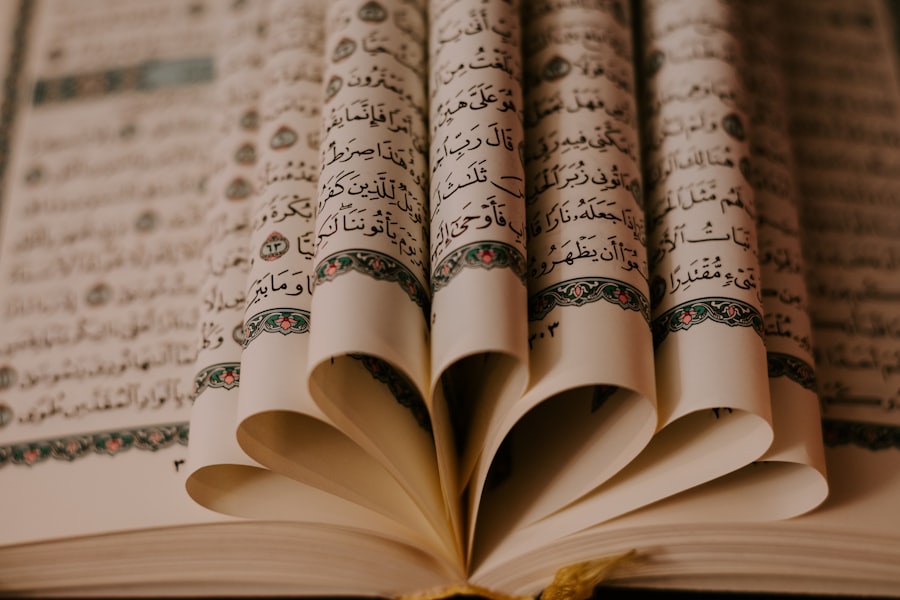
The Aztec civilization, which thrived in central Mexico from the 14th to the 16th centuries, developed a complex system of myths and legends that reflected their worldview. These narratives served multiple purposes, including entertainment, explaining natural phenomena, and providing a framework for understanding the relationship between humans and the divine. Aztec myths were closely tied to their religious practices, social structures, and cultural identity, offering insights into their perception of the world and their place in it.
Many of these stories focused on themes of creation, destruction, and the cyclical nature of existence, embodying the concept of duality that was fundamental to Aztec philosophy. Aztec mythology placed great emphasis on the natural world and the forces that governed it. Their gods were often associated with elements, celestial bodies, and agricultural cycles, which played crucial roles in daily life.
This belief system fostered a sense of obligation among the Aztecs to honor and appease these deities through various rituals and offerings. The mythological landscape of the Aztecs was populated by a diverse array of gods, heroes, and mythical beings, each contributing to the cultural fabric of this civilization. Studying these myths provides valuable insights into Aztec society and highlights universal themes such as creation, sacrifice, and the search for meaning that are common across many cultures throughout history.
Key Takeaways
- Aztec myths are a rich and complex part of the culture, encompassing a wide range of gods, legends, and rituals.
- The Aztec pantheon includes powerful gods such as Huitzilopochtli, Quetzalcoatl, and Tlaloc, each with their own unique attributes and significance.
- Legends and stories from Aztec culture often revolve around creation, warfare, and the afterlife, providing insight into the beliefs and values of the society.
- Aztec rituals and beliefs were deeply intertwined with their myths, with practices such as human sacrifice and bloodletting playing a central role in their religious ceremonies.
- The influence of Aztec myths can be seen in modern Mexican culture, from art and literature to festivals and traditions, demonstrating the enduring legacy of this ancient civilization.
The Gods of the Aztec Pantheon
The God of War and the Sun
Central to this pantheon is Huitzilopochtli, the god of war and the sun, who was believed to guide the Aztecs in their conquests and was revered as a protector of the people. His mythological narrative is steeped in themes of sacrifice and struggle, reflecting the harsh realities of life in a society that valued martial prowess.
A Warrior Deity’s Origin
Huitzilopochtli’s birth itself is a tale of conflict; he emerged fully grown and armed from his mother Coatlicue after she was impregnated by a ball of feathers. This dramatic origin story underscores his role as a warrior deity, destined to lead his people to greatness while demanding blood offerings in return for his favor.
Balancing Light and Darkness
Another significant figure in the Aztec pantheon is Quetzalcoatl, often referred to as the Feathered Serpent. He represents wisdom, wind, and fertility, embodying a duality that resonates with both creation and destruction. Quetzalcoatl’s narrative is rich with themes of enlightenment and moral integrity; he is often depicted as a benevolent god who taught humanity essential skills such as agriculture and writing. His myth includes tales of his rivalry with Tezcatlipoca, the god of night and sorcery, which illustrates the perpetual struggle between light and darkness. This dynamic interplay among the gods not only reflects the complexities of human nature but also serves as a reminder of the balance that must be maintained in life—a theme that permeates many aspects of Aztec culture.
Legends and Stories of the Aztec Culture

The legends woven into Aztec culture are as diverse as they are profound, often serving as allegories for moral lessons or reflections on human nature. One such tale is that of the Five Suns, which narrates the creation of the world through successive epochs ruled by different suns. Each sun represents a distinct era characterized by its own creation myth and eventual destruction—an embodiment of the cyclical nature of existence that was central to Aztec belief.
According to this legend, humanity has been created multiple times, each iteration culminating in cataclysmic events that serve as both punishment and renewal. This narrative not only illustrates the Aztecs’ understanding of time as cyclical but also emphasizes their belief in resilience and rebirth. Another captivating story is that of Popocatépetl and Iztaccíhuatl, two volcanoes that stand sentinel over Mexico City.
This romantic legend tells of a noble warrior, Popocatépetl, who falls in love with Iztaccíhuatl, a beautiful princess. After a series of tragic misunderstandings and battles, Iztaccíhuatl dies from grief, prompting Popocatépetl to carry her body to the mountains where they would rest together for eternity. In his sorrow, he becomes a volcano, eternally watching over her.
This poignant tale encapsulates themes of love, sacrifice, and loyalty while also serving as an explanation for natural phenomena—an essential aspect of how myths functioned within Aztec society.
Rituals and Beliefs in Aztec Society
| Rituals and Beliefs in Aztec Society | Description |
|---|---|
| Human Sacrifice | The Aztecs believed that sacrificing humans was necessary to appease the gods and ensure the continuation of the world. |
| Templo Mayor | The main temple in the Aztec capital of Tenochtitlan, where many of the religious rituals and sacrifices took place. |
| Gods and Goddesses | The Aztecs worshipped a pantheon of deities, including Huitzilopochtli, the god of sun and war, and Tlaloc, the god of rain and fertility. |
| Calendar and Festivals | The Aztecs had a complex calendar system and celebrated various festivals throughout the year to honor their gods and ancestors. |
Rituals played an integral role in Aztec society, serving as a bridge between the earthly realm and the divine. The Aztecs believed that maintaining harmony with their gods was essential for ensuring agricultural fertility, successful warfare, and overall societal stability. Central to these rituals were elaborate ceremonies that often involved music, dance, and offerings—ranging from food to human sacrifices—designed to appease their deities.
The Great Temple in Tenochtitlan was a focal point for these activities, where priests conducted rituals to honor gods like Tlaloc, the rain god, whose favor was crucial for bountiful harvests. The practice of human sacrifice is perhaps one of the most controversial aspects of Aztec rituals. Contrary to popular misconceptions that portray these acts solely as barbaric bloodlust, sacrifices were deeply rooted in religious beliefs about reciprocity between humans and gods.
The Aztecs believed that their gods had sacrificed themselves for humanity’s creation; thus, offering human lives was seen as a necessary tribute to sustain cosmic order. This belief system fostered a culture where sacrifice was not merely an act of violence but rather a sacred duty performed with reverence and solemnity. Through these rituals, the Aztecs sought to ensure balance in their world—a reflection of their understanding that life and death are intertwined.
The Influence of Aztec Myths on Modern Culture
The enduring legacy of Aztec myths can be observed in various facets of modern culture, particularly in art, literature, and popular media. Contemporary artists often draw inspiration from Aztec iconography and themes, reinterpreting ancient symbols to explore modern issues such as identity, colonialism, and environmentalism. For instance, murals depicting scenes from Aztec mythology can be found throughout Mexico City, serving as powerful reminders of cultural heritage while also engaging with contemporary social narratives.
These artistic expressions not only celebrate Aztec history but also challenge viewers to reflect on their own identities within a broader cultural context. In literature and film, Aztec myths have been reimagined to resonate with contemporary audiences. Works such as “The Bone People” by Keri Hulme or films like “Apocalypto” utilize elements from Aztec mythology to explore themes of survival, conflict, and spirituality.
These narratives often highlight the resilience of indigenous cultures in the face of adversity while also addressing universal human experiences such as love, loss, and redemption. By weaving ancient myths into modern storytelling frameworks, creators continue to keep these rich traditions alive while fostering dialogue about cultural heritage and its relevance today.
Uncovering Ancient Aztec Artifacts and Texts

Uncovering the Symbolism of Aztec Deities
These artifacts often depict scenes from mythology or religious rituals, offering glimpses into the beliefs that shaped their society. For instance, stone carvings representing deities like Huitzilopochtli or Quetzalcoatl reveal not only their physical attributes but also their symbolic significance within the pantheon.
The Importance of Codices in Understanding Aztec Mythology
Codices are particularly important for understanding Aztec mythology; these ancient manuscripts contain pictographs that narrate stories or document historical events. The Codex Mendoza is one such example that provides insights into both mythology and daily life during the Aztec Empire.
Reconstructing Aztec Cosmology and Preserving Cultural Heritage
Through careful study of these texts, scholars have been able to reconstruct aspects of Aztec cosmology and religious practices that might otherwise have remained obscured by time. The ongoing efforts to decipher these artifacts continue to enrich our understanding of this complex civilization while also highlighting the importance of preserving cultural heritage for future generations.
The Legacy of Aztec Myths in Contemporary Mexico
The legacy of Aztec myths remains profoundly influential in contemporary Mexico, where they continue to shape national identity and cultural pride. Many Mexicans view their indigenous heritage as an integral part of their identity; thus, myths from this ancient civilization are celebrated through festivals, art forms, and educational initiatives aimed at preserving indigenous languages and traditions. Events such as Día de los Muertos (Day of the Dead) incorporate elements from Aztec beliefs about death and rebirth, illustrating how ancient customs have been woven into modern practices to create a unique cultural tapestry.
Moreover, contemporary movements advocating for indigenous rights often draw upon Aztec mythology as a source of inspiration and empowerment. Activists utilize these narratives to reclaim cultural identity while challenging historical injustices stemming from colonialism. By invoking ancient stories that emphasize resilience and connection to land, they seek to foster a sense of unity among indigenous communities in Mexico today.
In this way, Aztec myths transcend mere historical curiosity; they serve as living narratives that continue to resonate with contemporary issues surrounding identity, heritage, and social justice in modern Mexican society.
FAQs
What are Aztec myths?
Aztec myths are traditional stories and legends that were passed down orally through generations in the Aztec civilization. These myths often involve gods, heroes, and supernatural beings, and were used to explain the origins of the world, natural phenomena, and the Aztec people themselves.
What are some common themes in Aztec myths?
Common themes in Aztec myths include creation stories, the struggles and conflicts between gods, the afterlife, and the importance of sacrifice and ritual in Aztec society. Many myths also feature the interactions between humans and gods, and the consequences of these interactions.
Who were the main gods in Aztec mythology?
The Aztecs had a complex pantheon of gods, with some of the most important ones being Huitzilopochtli, the god of war and the sun, Quetzalcoatl, the feathered serpent god, Tlaloc, the god of rain and fertility, and Tezcatlipoca, the god of destiny and sorcery.
How were Aztec myths passed down?
Aztec myths were primarily passed down orally, with storytellers and priests being responsible for preserving and sharing these stories. Some myths were also recorded in codices and other written sources by Spanish colonizers after the conquest of the Aztec Empire.
What role did myths play in Aztec society?
Myths played a crucial role in Aztec society, serving as a way to explain the natural world, justify religious practices and rituals, and reinforce social and political structures. They also provided a sense of identity and belonging for the Aztec people.






